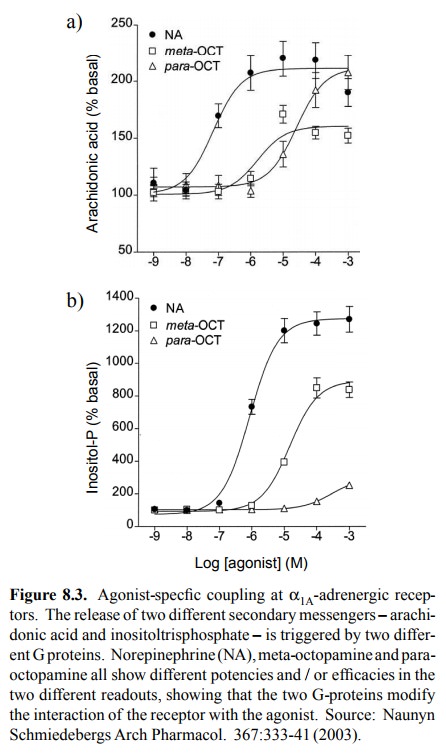Chapter: Biochemical Pharmacology : G protein-coupled receptors
Agonist-specific coupling
Agonist-specific coupling
On the other hand, receptors
may be promiscuous as well and couple to more than one G protein. Many
receptors appear to be pre-associated with G proteins in the absence of
agonists. The pre-bound G protein may in turn change the conformation of the
entire receptor and thus modify its affinity for mediator and drug molecules.
If there is more than one type of G protein to couple to a given receptor, this
may result in several sub-populations of the receptor that may exhibit
diverging affinities for different agonists. This behaviour is known as
`agonist-specific coupling'.
An
example of agonist-specific coupling is shown in Fig-ure 8.3. The receptor in
question is the α1A-adrenergic re-ceptor. This receptor triggers at least two
different intracel-lular signaling pathways: Arachidonic acid is released by
phospholipase A2, and inositoltriphosphate (IP3) is
released by phospholipase C. These two effects are mediated by two different G
proteins that couple to the same receptor. If we compare the two parameters,
the three compounds nore-pinephrine and meta- and para-octopamine yield
substan-tially different potencies and efficacies. If we hadn't been told
otherwise, we would interpret this observation as evi-dence of two different
receptors. In a sense, of course, dif-ferent GPCR-G protein complexes are different receptors.

Related Topics